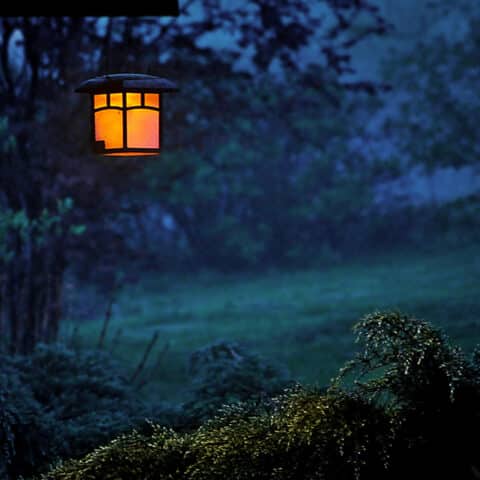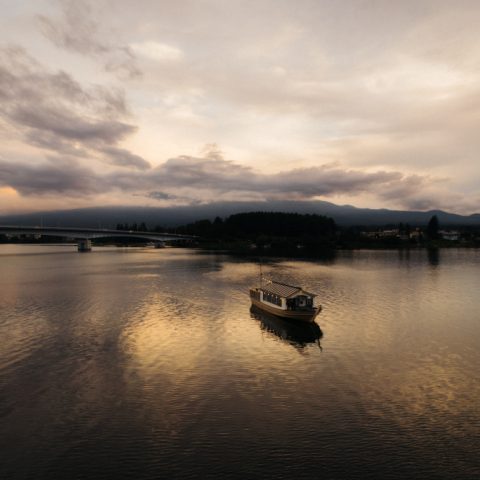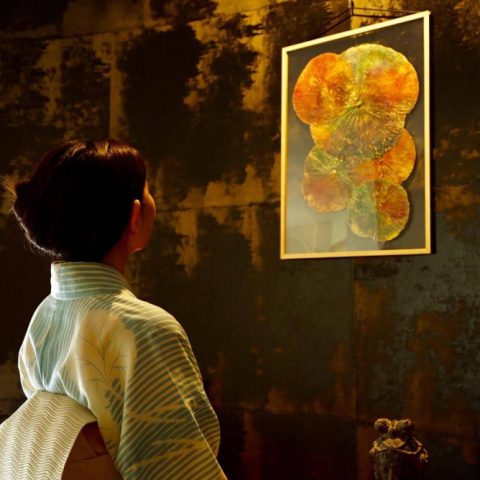
Please welcome Kayoko San, an ikebana specialist who offers classes in Nagoya and sometimes in Tokyo! She has spent the past 7 years teaching ikebana to people from various countries and has been practising this amazing skill for almost 20 years. Her pieces are a real tribute to her unbeatable artistic skills!
So, let’s start learning about Kayoko San’s amazing journey and her work together!

Fulfilling Her Dreams – Photo Credit: Kayoko Kondo
First of all, can you please introduce yourself?
My name is Kayoko Kondo and I’m 60 years old. I grew up in Arimatsu, Nagoya. It is a town of tie-dyeing with more than 400 years of history. In fact, many historical buildings still remain along Tokaido Road. I spent a lot of my younger years in the U.S., with 1 year in high school as an exchange student, and 4 years at a university. After returning to Japan, I taught English conversational skills to Japanese people for 15 years. Then I went to a couple of schools for translation and I began working at a major automobile company as a translator. At the same time, I started taking ikebana classes as I wanted to learn more about my own culture. When I was younger, I was only interested in Western cultures, and I could not communicate with people regarding my own culture. But, I always loved plants and art, so when I wanted to start getting more involved with my country’s culture I decided to go with Ikebana.

Kayoko San Explaining The Arrangement Techniques – Photo Credit: Kayoko Kondo
Was being an Ikebana artist your dream, or did fate put you on this path? Did you always want to teach people about this art?
When I first started learning, it was really just my hobby. I became more serious about ikebana about 10 years ago, and now I want to share my love of this magnificent art with anyone who is interested. Communicating with people through ikebana has become my life’s work.

Nothing More Pretty Than This Ikebana Piece by Kayoko San – Photo Credit: Kayoko Kondo
What are the core principles of Ikebana? Do you think learning this art form helps people calm down and bring their artistic souls out?
Ikebana is a quick way to connect with nature, being a way to create art with living materials. So, you must be responsible for giving it that second life, ultimately making the plants more beautiful than before they were cut.
Yes, I think ikebana is like walking through a forest. When surrounded by nature, people calm down and forget about their daily stress, and that allows them to purely focus on creation.

People with their Ikebana Pieces in Kayoko San’s Class – Photo Credit: Kayoko Kondo
How many people are you teaching at a time, and how can we enroll in your classes?
I normally teach 1 to 7 people at a time. You can either try my private lessons or come to regular classes if you prefer learning with textbooks. Always feel free to contact me by email or by Facebook message if you wish to learn more.

A lovely Ikebana Piece By Kayoko San – Photo Credit: Kayoko Kondo
Beyond the basic styles of Ikebana we know, are there any specific styles you prefer?
I love minimalistic ikebana which only uses 1 flower and 1 leaf. I also love the style that is made with only 1 kind of material.

Kayoko San’s Stunning Flower Arrangement – Photo Credit: Kayoko Kondo
Can you walk us through a simple process of making Ikebana? Is the class you offer accessible to people with no experience?
Let me explain to you how we go about the basic style of moribana: When you first encounter the materials in a class, take one material and study it carefully. If you find any damaged leaves or overlapping leaves or branches, remove them. You want to determine what posture or orientation of the material you want to show in your ikebana. Then you choose your vase and place a kenzan (if you are doing a nageire style, you will not use a kenzan).
Measure the three main branches (called shin, soe, and hikae) that make up the structure of the work. Now is the time to start bending the bendable materials into the right places. Ikebana is an art of depth and space. So, you always want to make sure your ikebana does not become 2-dimensional, looking flat and having no depth. Add some subordinate branches to the main branches. I offer ikebana experience classes to people who have never learned it before. So if you have no experience in this art, don’t fear I’m always happy to help you start your journey. People can either come to my home school or to the classes I hold in Nagoya and Tokyo.

An Amazing Ikebana Piece by Kayoko San – Photo Credit: Kayoko Kondo
Are traditional Ikebana styles different from the modern ones? Which ones do you prefer?
Yes, the styles created today are quite different from those of old. Traditional Ikebana Styles aim to perfect the already set styles made and enjoyed by others. Modern ikebana, on the other hand, allows you to create your own art. I respect the traditional ways, but I prefer to create modern ikebana that matches more with our current lifestyle today.

Kayoko San’s Ikebana Teaching Classes – Photo Credit: Kayoko Kondo
Do you have any advice for someone looking to pursue Ikebana as their main art?
Ikebana is a wonderful activity that can be used to communicate with people. Of course, though, your skills will only develop after much practice just as with any other art. So, if you want to become good at ikebana, you will need to practice a lot at home also.

Kayoko San Working on an Ikebana Piece – Photo Credit: Kayoko Kondo
We’d love to know if you have any interesting stories related to your experience in Ikebana, teaching or related to anything else you’d like to tell?
You can enjoy ikebana for a long time. I know many ikebana practitioners who are still active in their 70s, 80s, and even their 90s. So, if you want to start a hobby that can last a lifetime, I definitely suggest Ikebana!

Learning Ikebana in Kayoko San’s Class – Photo Credit: Kayoko Kondo
Lastly, is there anything else you would like to add for our readers?
I recently visited Taiwan for my workshops. I was fascinated by their parks and flower markets. Tea culture in Taiwan was also fascinating. I always thought that we Japanese loved our tea, but people in Taiwan seemed to love it just as much. This allowed me to realize that Ikebana is a good way to make friends all over the world. Through my art, I have made so many friends from many countries. If you love plants, and if you are willing to accept and learn new cultures, you will enjoy ikebana.
Thank you so much Kayoko San for taking precious time out of your day for us, answering our questions, and sharing your extraordinary story with us! We really appreciate your insights and we are so glad you joined us for this interview :)!
Follow Kayoko Kondo on:
Website: https://ikebanaworkshop.com/
Facebook: The Ikebana Workshop – https://www.facebook.com/nagoya458
Featured Photo Credit: Kayoko Kondo



